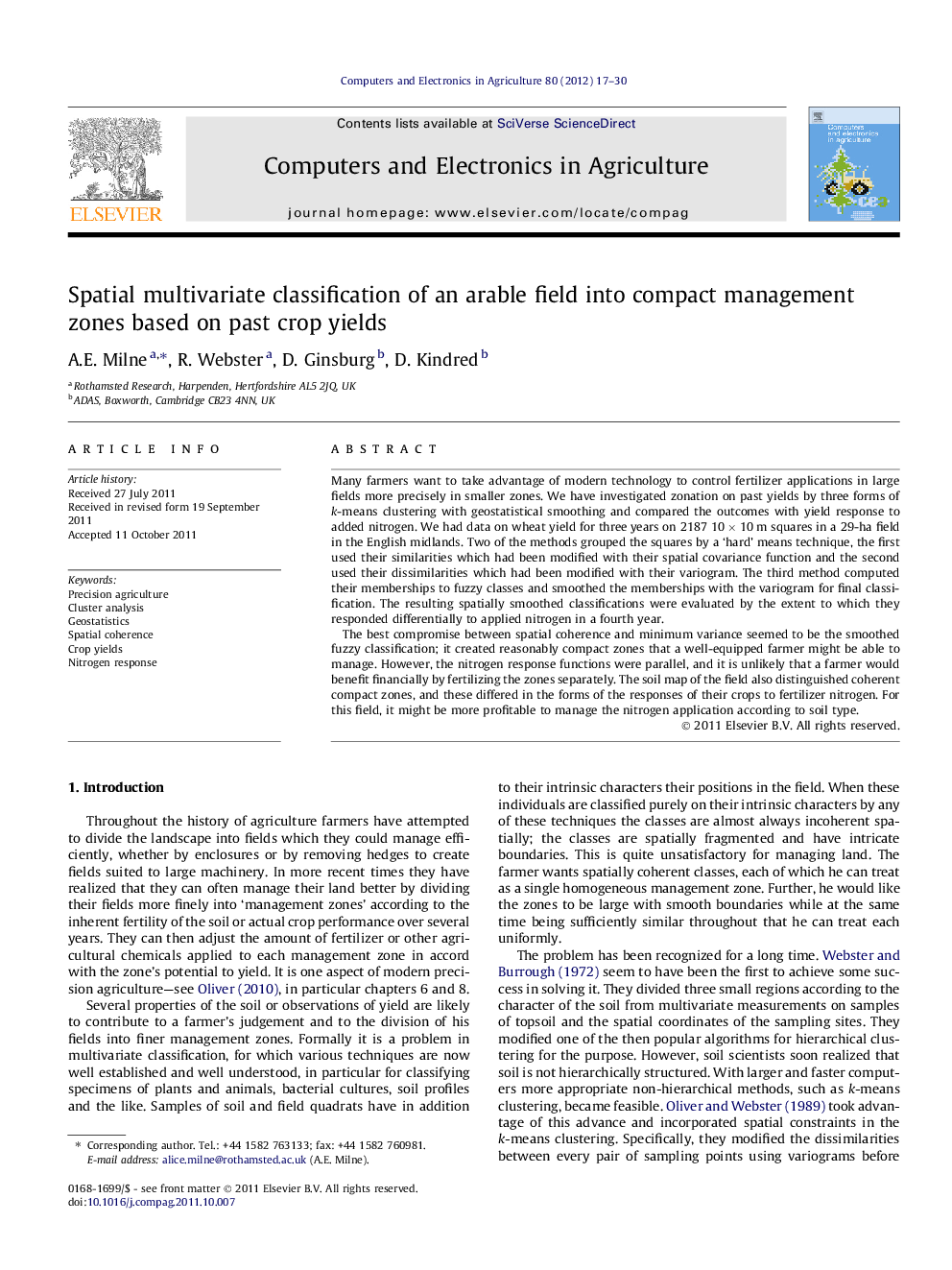| کد مقاله | کد نشریه | سال انتشار | مقاله انگلیسی | نسخه تمام متن |
|---|---|---|---|---|
| 85196 | 158929 | 2012 | 14 صفحه PDF | دانلود رایگان |

Many farmers want to take advantage of modern technology to control fertilizer applications in large fields more precisely in smaller zones. We have investigated zonation on past yields by three forms of k-means clustering with geostatistical smoothing and compared the outcomes with yield response to added nitrogen. We had data on wheat yield for three years on 2187 10 × 10 m squares in a 29-ha field in the English midlands. Two of the methods grouped the squares by a ‘hard’ means technique, the first used their similarities which had been modified with their spatial covariance function and the second used their dissimilarities which had been modified with their variogram. The third method computed their memberships to fuzzy classes and smoothed the memberships with the variogram for final classification. The resulting spatially smoothed classifications were evaluated by the extent to which they responded differentially to applied nitrogen in a fourth year.The best compromise between spatial coherence and minimum variance seemed to be the smoothed fuzzy classification; it created reasonably compact zones that a well-equipped farmer might be able to manage. However, the nitrogen response functions were parallel, and it is unlikely that a farmer would benefit financially by fertilizing the zones separately. The soil map of the field also distinguished coherent compact zones, and these differed in the forms of the responses of their crops to fertilizer nitrogen. For this field, it might be more profitable to manage the nitrogen application according to soil type.
► We investigated three methods for forming compact management zones based on past yields.
► Lark’s method represented spatio-temp yield variation and formed coherent zones best.
► Zones were evaluated to see if they responded differentially to applied nitrogen.
► Lark’s method explained the yield response to N best.
► However, the difference in N optima between classes was very small.
Journal: Computers and Electronics in Agriculture - Volume 80, January 2012, Pages 17–30